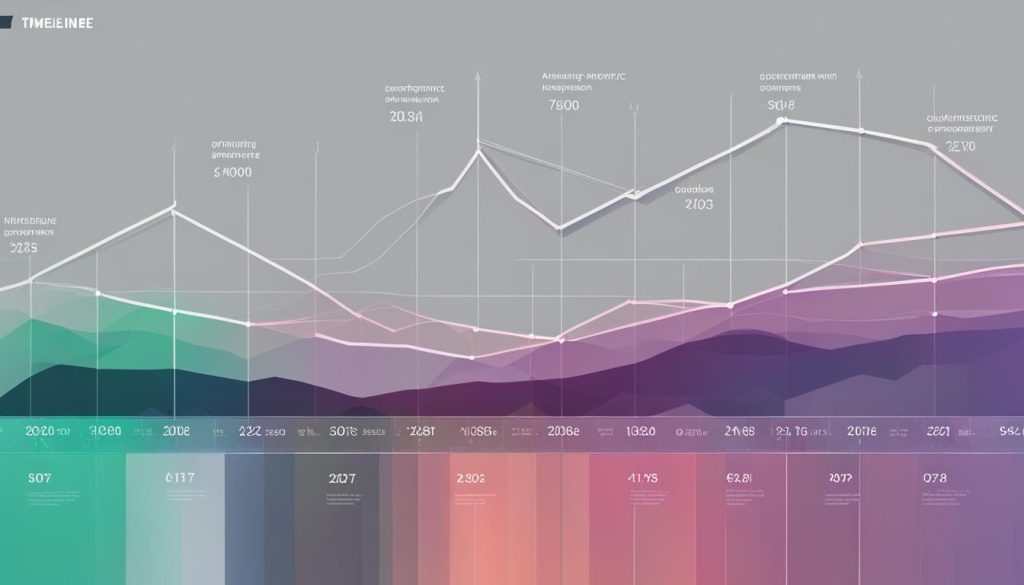| Section | Key Points |
|---|---|
| Why Speed Matters in Content Delivery | Importance of fast loading times, Impact on bounce rates and conversions |
| Building Authoritative Topic Clusters | Enhancing site structure, Strengthening subject matter authority |
| Internal Linking: The SEO Powerhouse Often Overlooked | Role in site navigation and SEO, Best practices for linking |
| Strategic Use of Anchor Text | Importance of varied anchor text, Balancing keyword-rich and natural text |
| Leveraging High Authority Pages for Internal Linking | Utilizing high-traffic pages, Techniques for linking from authority pages |
| The Power of SERP Real Estate Maximization | Dominating search results, Increasing visibility on SERPs |
| Innovative Link Building through Strategic Content Placement | Earning backlinks with valuable content, Leveraging guest posts and infographics |
Did you know that only 0.78% of Google searchers click on results from the second page? That’s right, the majority of users never even bother to go beyond the first page of search engine results. So, how can you ensure that your content stands out and captures the attention of your target audience?
In this article, we will take a deep dive into the world of content optimization strategies and reveal 7 techniques that are proven to work in 2024. From SEO best practices to metadata optimization, user experience to link building tactics, we will equip you with the knowledge and tools you need to elevate your content from zero to hero in the eyes of search engines and your audience.
So, buckle up and get ready to unleash the power of content optimization!
Key Takeaways:
- Implementing SEO best practices is crucial for maximizing your content’s visibility in search engine results.
- Conducting thorough keyword research helps you understand your audience’s search intent and optimize your content accordingly.
- Utilizing on-page SEO techniques such as optimizing headings, URLs, and image alt tags can significantly improve your content’s search engine ranking.
- Optimizing metadata, including meta titles and descriptions, gives search engines valuable information about your content and increases its click-through rate.
- Leveraging content marketing strategies, such as creating high-quality and shareable content, enhances your brand’s visibility and authority.
Enhancing Time to Value: Why Speed Matters in Content Delivery
In today’s digital world, time is of the essence. Users expect fast and efficient content delivery, and if your website fails to meet their expectations, you risk losing valuable engagement and conversions. That’s why speed is a crucial factor in enhancing the time to value for your audience.
Optimizing website performance is essential not only for improving user experience but also for boosting search engine rankings. When your website loads quickly, users can access your content without frustrating delays. This creates a positive first impression and encourages them to stay on your website longer, increasing the likelihood of conversion.
Mobile optimization is another vital aspect of speed in content delivery. With the growing number of users accessing the internet via mobile devices, a mobile-friendly website is no longer an option, but a necessity. A mobile optimized site ensures that your content is easily accessible and readable on smaller screens, providing a seamless browsing experience for mobile users.
Whether it’s loading time or mobile responsiveness, improving website speed is a win-win situation. Not only does it enhance the user experience, but it also improves your search engine rankings. Search engines like Google consider website performance as one of the ranking factors, making it crucial to prioritize speed optimization for your content delivery.
By focusing on speed and optimizing both website performance and mobile responsiveness, you can maximize the time to value for your audience. Delivering content swiftly and seamlessly enhances the overall user experience and ensures that your users receive the value they seek from the content you provide.
Building Authoritative Topic Clusters
In today’s competitive digital landscape, establishing topical authority is crucial for enhancing search engine rankings and driving organic traffic to your website. One effective strategy for achieving this is by building authoritative topic clusters. By grouping related content around a central pillar page, you can demonstrate your expertise on a specific subject and provide comprehensive information to users.
So, how do you go about building authoritative topic clusters? It starts with understanding user intent. By conducting extensive keyword research and analyzing search queries, you can identify the topics that your target audience is actively searching for. This insight will help you create content that satisfies user intent and addresses their specific needs.

“By grouping related content around a central pillar page, you can demonstrate your expertise on a specific subject and provide comprehensive information to users.”
Once you have identified the main topics for your topic clusters, it’s time to create the pillar content. This should be a high-quality, in-depth piece of content that serves as the cornerstone for the entire cluster. The pillar content should cover the topic in detail and provide a strong foundation for the supporting content within the cluster.
Next, you’ll need to create the supporting content. These are the articles, blog posts, or other forms of content that expand on specific subtopics related to the pillar content. Each piece of supporting content should link back to the pillar page and to other relevant supporting content within the cluster. This internal linking structure not only helps search engines understand the relationship between your content but also provides a seamless user experience by guiding visitors through the cluster.
Internal linking is a key aspect of building authoritative topic clusters. By strategically linking between the pillar page and supporting content, you establish a clear hierarchy and signal to search engines that your website is a trusted source of information on the topic. Additionally, internal linking enhances user navigation, helping them discover related content and dive deeper into the subject matter.
By building authoritative topic clusters, you can boost your topical authority, improve search engine rankings, and deliver valuable content that meets the needs of your target audience. So, start identifying your topic clusters, create compelling pillar content, and strategically link your supporting content for maximum impact.
Internal Linking: The SEO Powerhouse Often Overlooked
In the realm of SEO, internal linking stands tall as one of the most powerful and effective techniques to boost your website’s visibility and authority. However, it is often overlooked or underestimated in favor of more glamorous strategies. In this section, we will uncover the hidden potential of internal linking and its impact on search engine rankings.
Strategic Use of Anchor Text
When it comes to internal linking, strategic use of anchor text plays a vital role in optimizing your content for search engines. By using relevant keywords and phrases as anchor text, you can signal to search engines the relevance and context of the pages you are linking to. This helps search engines understand the interconnectedness of your content and improves the overall visibility of your website.
“Anchor text acts as a roadmap for search engines, guiding them to relevant content within your website and enhancing the user experience.”
However, it’s important to strike the right balance. Over-optimization or excessive use of keyword-rich anchor text can actually have a negative impact on your SEO efforts. It’s recommended to use a mix of branded, generic, and keyword-focused anchor text to ensure a natural and user-friendly linking structure.

Leveraging High Authority Pages for Internal Linking
Another noteworthy aspect of internal linking is leveraging high authority pages within your website to enhance the overall authority of your website. By strategically linking from high authority pages to other relevant pages on your site, you pass on some of that authority and signal to search engines that these linked pages are important and trustworthy.
When choosing high authority pages for internal linking, consider pages that receive a significant amount of traffic, have high engagement metrics, and rank well in search engine results. By linking from these pages to other relevant pages, you create a network of interconnectedness that strengthens your website’s overall authority and boosts its visibility in search engine rankings.
“Internal linking allows you to harness the power of your own high authority pages and channel it to other pages, giving them a significant SEO boost.”
In summary, internal linking is an SEO powerhouse often overlooked by many. By strategically using anchor text and leveraging high authority pages within your website, you can maximize the impact of internal linking on search engine rankings and elevate your website’s visibility and authority.
The Power of SERP Real Estate Maximization
In the realm of search engine optimization (SEO), one of the key factors that can greatly impact your website’s visibility and click-through rate is your presence on the search engine results page (SERP). Maximizing your SERP real estate can significantly improve your search engine rankings and ultimately drive more organic traffic to your website.
So, how can you make the most of your SERP real estate? Here are a few important strategies to consider:
- Utilize structured data: By implementing structured data markup on your website, you can provide search engines with more detailed information about your content. This allows search engines to display rich snippets, knowledge graphs, and other enhanced features that can make your listings stand out on the SERP.
- Create multimedia content: Incorporating multimedia elements, such as images, videos, and infographics, into your webpages can capture users’ attention and make your listings more visually appealing on the SERP. Engaging and informative multimedia content can increase the likelihood of users clicking on your website.
- Establish a Google Business Profile: A Google Business Profile not only provides users with essential information about your business, such as opening hours and contact details, but it also allows you to appear in local search results and Google Maps. This can significantly enhance your SERP real estate and attract potential customers who are searching for products or services in their locality.
By leveraging these strategies and maximizing your SERP real estate, you can improve your search engine rankings, increase visibility, and drive more organic traffic to your website. Remember, in the competitive online landscape, every small advantage counts, and optimizing your presence on the SERP is an effective way to gain an edge over your competitors.

| SERP Real Estate Maximization Strategies | Benefits |
|---|---|
| Utilize structured data | Enhanced search results with rich snippets and knowledge graphs |
| Create multimedia content | Increased user engagement and click-through rates |
| Establish a Google Business Profile | Improved local search visibility and customer reach |
Innovative Link Building through Strategic Content Placement
In today’s competitive digital landscape, link building plays a crucial role in improving your website’s visibility and authority. However, traditional link building strategies may not always yield the desired results. To truly stand out and attract high-quality backlinks, it’s essential to adopt innovative approaches and leverage strategic content placement.
One effective technique for innovative link building is utilizing Google Ads to generate enhanced backlinks. By strategically placing your content through Google Ads, you can attract relevant traffic and increase the chances of gaining valuable backlinks from authoritative websites. This approach not only helps in acquiring backlinks but also enhances your website’s credibility in the eyes of search engines.
Another important aspect of innovative link building is targeting high-value content for link acquisition. Instead of focusing solely on quantity, it’s crucial to prioritize quality and relevance. By creating high-value content that provides unique insights, expert opinions, and in-depth analysis, you can attract the attention of industry influencers, bloggers, and media outlets. These stakeholders are more likely to link to your content, thereby amplifying your website’s visibility and authority.
To summarize, innovative link building through strategic content placement is a powerful approach to enhance your website’s backlink profile and increase its authority. By utilizing Google Ads and targeting high-value content, you can attract relevant traffic and acquire valuable backlinks from reputable sources. Keep in mind that link building should always be approached ethically and with a focus on providing value to your audience.

Utilizing Google Ads for Enhanced Backlinks
Google Ads is not only an effective tool for driving traffic and increasing conversions but also a valuable resource for generating enhanced backlinks. By strategically placing your content through Google Ads, you can reach a wider audience and increase the chances of acquiring authoritative backlinks.
Here are some key steps to utilize Google Ads for enhanced backlinks:
- Create compelling ads that align with your target audience’s interests and needs.
- Identify relevant websites and blogs in your industry that have a high domain authority.
- Reach out to these websites and offer to provide valuable content that aligns with their audience’s interests.
- Focus on creating content that provides unique insights, expert opinions, and actionable solutions.
- Promote your content through Google Ads to drive traffic and increase its exposure.
- As the visibility of your content grows, you’re more likely to attract backlinks from reputable sources.
Targeting High Value Content for Link Acquisition
When it comes to link acquisition, targeting high-value content is key. By creating exceptional content that stands out from the competition, you can attract the attention of industry influencers, bloggers, and journalists who are more likely to link to your website.
Here are some strategies for targeting high-value content:
- Perform extensive research to identify trending topics and gaps in your industry.
- Focus on creating in-depth, well-researched articles, case studies, and guides.
- Provide unique insights, expert opinions, and actionable advice to your audience.
- Collaborate with industry influencers and experts to create collaborative content pieces.
- Ensure your content is visually appealing and easily shareable on social media platforms.
- Share your content with relevant online communities, forums, and groups.
- Engage with your audience through comments, social media, and email marketing.
By consistently producing high-value content and promoting it strategically, you can attract backlinks from reputable sources, enhance your website’s authority, and boost your search engine rankings.
| Benefits of Innovative Link Building | Benefits of Strategic Content Placement |
|---|---|
| 1. Increases website authority | 1. Attracts relevant traffic |
| 2. Improves search engine rankings | 2. Enhances brand visibility |
| 3. Boosts organic traffic | 3. Builds credibility and trust |
| 4. Drives targeted leads | 4. Establishes thought leadership |
Content Optimization Strategies: Maximizing Featured Snippets
In the world of SEO, featured snippets are like a golden ticket to increased visibility and website traffic. These coveted snippets provide concise answers to user queries directly on the search engine results page (SERP), making them a valuable asset for attracting potential customers. To maximize the chances of your content appearing as a featured snippet, it’s essential to employ effective content optimization strategies.
One crucial aspect of content optimization for featured snippets is the use of structured data. By implementing structured data markup, you can provide search engines with explicit information about the content on your webpage, increasing the likelihood of it being chosen as a featured snippet. Structured data allows search engines to understand the context and format of your content, making it more relevant and appealing to users.
Another key element in optimizing for featured snippets is incorporating multimedia content. Including images, videos, and infographics in your content not only enhances the visual appeal but also increases the chances of your content being selected for a featured snippet. When search engines identify multimedia content that complements the text-based information, it provides a more engaging and comprehensive user experience.

When optimizing for featured snippets, it’s important to keep in mind that the format and structure of your content play a significant role. Utilize headings, bolded text, and lists to make your content easier to scan and digest. Clearly present the question or query and then provide a concise and well-structured answer. This makes it easier for search engines to identify and extract the relevant information needed for a featured snippet.
Remember, featured snippets are like mini advertising billboards on the SERP. Grab this valuable SERP real estate by optimizing your content for featured snippets through structured data implementation and the inclusion of eye-catching multimedia elements.
| Key Strategies to Maximize Featured Snippets | Benefits |
|---|---|
| Implement structured data markup | Enhanced visibility and higher click-through rates |
| Incorporate multimedia content | Increased engagement and improved user experience |
| Optimize formatting and structure | Improved readability and higher chances of selection |
By implementing these content optimization strategies, you can position your website at the top of the SERP and attract valuable organic traffic. Remember, the key to maximizing featured snippets lies in providing relevant and comprehensive answers to user queries while leveraging structured data and captivating multimedia content.
Adapting to Algorithm Changes with Proven SEO Techniques
In the ever-changing landscape of search engine optimization, staying ahead requires adapting to algorithm changes. By employing proven SEO techniques, you can enhance your website’s visibility and maintain a strong online presence. Here, we will discuss two essential strategies: embracing AI for SEO-enhanced content writing and optimizing for the evolving page experience metrics.
Embracing AI for SEO-Enhanced Content Writing
Artificial Intelligence (AI) is revolutionizing the field of content writing, enabling more efficient and effective optimization. By embracing AI, you can streamline your content creation process and generate SEO-enhanced content that resonates with both search engines and your target audience.
AI-powered tools can help you identify relevant keywords, analyze content performance, and optimize on-page elements such as headings, meta tags, and image alt tags. These tools can also provide insights into user intent, allowing you to create content that addresses their needs and interests.
Furthermore, AI can assist in content ideation, helping you generate fresh ideas and uncover new topics to cover. By using AI to enhance your content writing process, you can save time and resources while maximizing the impact of your SEO efforts.
Optimizing for the Evolving Page Experience Metrics
Page experience metrics play a crucial role in determining search engine rankings. To optimize for these evolving metrics, it is essential to prioritize user experience and ensure your website delivers a seamless browsing experience.
Key factors to consider when optimizing for page experience include loading speed, mobile friendliness, visual stability, and interactivity. Improving these aspects helps create a positive user experience and encourages users to stay on your website for longer periods.

Additionally, search engines are placing increasing importance on Core Web Vitals, which measure crucial aspects of page experience. These include metrics such as Largest Contentful Paint (LCP), Cumulative Layout Shift (CLS), and First Input Delay (FID). By monitoring and optimizing these metrics, you can boost your website’s performance and enhance user satisfaction.
It is worth noting that page experience metrics are not static and will continue to evolve over time. To ensure ongoing success in search engine rankings, it is crucial to stay up-to-date with the latest trends and best practices in page experience optimization.
In conclusion, to adapt to algorithm changes and maintain a strong SEO presence, it is vital to embrace AI for SEO-enhanced content writing and optimize for the evolving page experience metrics. By implementing these proven techniques, you can position your website for long-term success in search engine rankings.
Conclusion
Congratulations on reaching the end of this article! You’ve learned valuable insights into content optimization techniques that actually work in 2024. Now, it’s time to put this knowledge into action and take your content to the next level.
Remember, implementing SEO best practices, conducting thorough keyword research, and utilizing on-page SEO techniques are essential for maximizing the visibility and relevance of your content. Optimizing metadata, leveraging content marketing strategies, and employing effective link building tactics can further enhance your website’s authority and drive organic traffic.
In addition, don’t overlook the importance of keyword density, user experience, and meta tags. By paying attention to these elements, you can improve your content’s search engine rankings and provide a seamless browsing experience for your audience.
As we move forward, the future of content optimization in 2024 looks promising. Continually adapting to algorithm changes, embracing AI for SEO-enhanced content writing, and optimizing for evolving page experience metrics will keep you ahead of the game.
FAQ
What are some content optimization strategies for SEO?
Some effective content optimization strategies for SEO include implementing SEO best practices, conducting keyword research, utilizing on-page SEO techniques, optimizing metadata, leveraging content marketing strategies, and employing link building tactics.
How important is keyword density in content optimization?
Keyword density plays a role in content optimization, but it’s more important to focus on creating high-quality content that satisfies user intent and provides value. Avoid keyword stuffing and instead use keywords naturally and strategically throughout your content.
How does user experience impact content optimization?
User experience is a crucial factor in content optimization. Providing a seamless and enjoyable experience for users improves engagement, reduces bounce rates, and signals to search engines that your content is valuable. Focus on factors such as website performance, mobile optimization, and user-friendly design.
What role do meta tags play in content optimization?
Meta tags, such as the meta title and meta description, provide information to search engines about your content and can influence click-through rates from search results. Optimize these tags by including relevant keywords and compelling, concise descriptions.
How does internal linking impact content optimization?
Internal linking is an effective SEO technique that improves content optimization. It helps search engines understand the structure of your website and establishes connections between related content. Strategic use of anchor text and leveraging high authority pages for internal linking can boost search engine rankings.
How can I maximize my website’s visibility in search results?
To maximize visibility in search results, focus on maximizing SERP real estate. This can be achieved by using structured data, creating multimedia content, and establishing a Google Business Profile. These tactics enhance your website’s presence and click-through rate in search results.
What are some innovative link building strategies for content optimization?
Innovative link building strategies for content optimization include strategic content placement and utilizing Google Ads to generate enhanced backlinks. By targeting high-value content and strategically placing links, you can acquire valuable backlinks that improve search engine rankings.
How can I optimize my content to secure featured snippets?
To maximize your chances of securing featured snippets, focus on creating structured data and multimedia content that align with the user’s search intent. This increases the visibility and click-through rate of your website, resulting in higher search rankings.
How can I adapt to algorithm changes for content optimization?
To adapt to algorithm changes, employ proven SEO techniques such as embracing AI for SEO-enhanced content writing and optimizing for evolving page experience metrics. Staying updated on algorithm changes and implementing effective strategies will help you stay ahead in the ever-changing landscape of search engine optimization.

